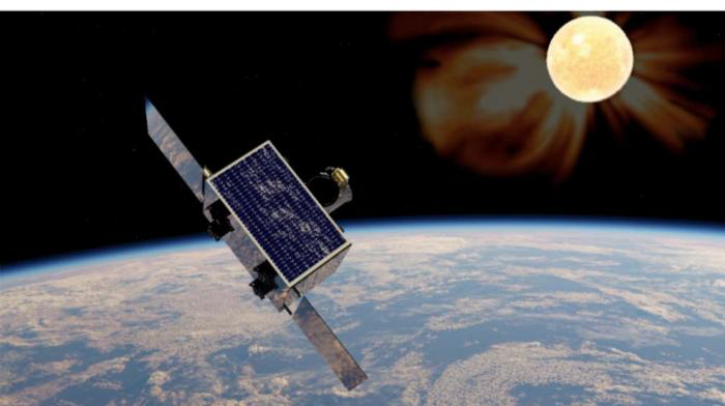At the Royal Astronomical Society’s National Astronomy Meeting 2025 in Durham in the UK, a proposal has been presented to launch a UK-led satellite mission concept named UK-ODESSI (UK-Orbital pathfinDEr for Space-borne, Space-weather Instrumentation). This concept would deploy a suite of homegrown scientific instruments on a low-cost spacecraft in low-Earth orbit to strengthen the country’s space weather observation and forecasting.
UK-ODESSI would carry a baseline payload including a solar coronagraph (SCOPE), developed at the Science and Technology Facilities Council’s (STFC) RAL Space, and a high-energy particle instrument (HEPI), developed at the University of Surrey. Both are designed to fill current UK and European capability gaps in areas of space weather monitoring.
Solar coronagraph
SCOPE is the only solar coronagraph currently under development in Europe for space weather operations. The proposal highlights that currently Europe relies on USA-operated assets for CME arrival forecasts and that the sovereign UK and European coronagraph capability is increasingly important, mostly because of the growing uncertainty around the future of US scientific infrastructure.
Dr Jackie Davies, science lead for UK-ODESSI at STFC RAL Space and SCOPE instrument lead, said, “Testing a coronagraph, with its challenging stray-light requirements, is difficult on the ground. A low-cost LEO platform is an ideal testbed for performance verification, while also providing a level of resilience for current assets. With a validated coronagraph design, we would develop UK sovereign and European capability that could potentially be deployed on spacecraft in multiple locations.”
High-energy particle instrument
HEPI is designed to measure highly energetic solar particles, specifically those with energies above 300MeV.
Professor Keith Ryden, director of Surrey Space Centre at the University of Surrey and HEPI instrument lead, added, “These particles are hazardous because they are highly penetrating and can affect systems even on Earth’s surface or on aircraft.
“In situ observations of such particles are extremely limited, with data currently available from only a few locations in geostationary orbit. A validated instrument like HEPI, deployed on multiple spacecraft, would significantly improve current models used for forecasting particle radiation events.”
UK-ODESSI’s satellite
UK-ODESSI would use a small satellite platform developed by Surrey Satellite Technology (SSTL), placed in a sun-synchronous terminator orbit around 500–600km above Earth. The orbit would enable near-continuous collection of operational data, with only short eclipse periods at one solstice. The mission would also serve as a testbed for other satellite technologies developed in the UK, and could help pave the way for future deployments beyond low-Earth orbit.
At present, the development of the SCOPE and HEPI instruments is well underway, while the UK-ODESSI mission and spacecraft concept are still at a conceptual level. A design study is therefore being sought to move the mission forward, with a potential launch target of within five years if funding is secured. The project would aim to align with a cost and timeframe comparable to an ESA mini-F-class mission.
“Space weather is an acknowledged UK national risk,” Dr Davies said. “The development and deployment of instruments for forecasting, nowcasting and model validation is a critical element in the successful mitigation of this critical national risk.”
In related news, the first ever geostationary satellite to provide 3D profiles for temperature and humidity for Europe was recently launched, in the latest phase of a multi-year project by EUMETSAT. Read the full story here



